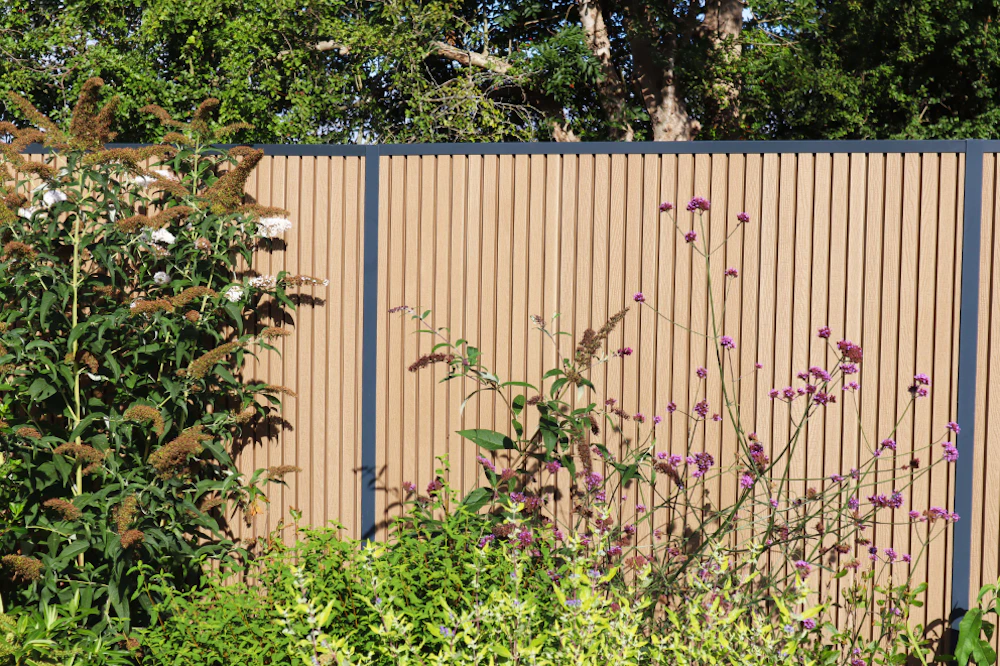
How to Install Composite Fencing?
Seriously considering home renovations? Finally deciding to create the outdoor space of your dreams? Want to enjoy your garden at your leisure? A fence is something you definitely need to consider, and when it comes to high-quality, durable, and stylish fences, composite fencing is at the top of the list. British homeowners are adopting it at increasing rates.
This blog post answers what makes composite fencing so attractive and how you can install it in your home! It is a comprehensive guide for anyone looking to improve their garden and increase the curb appeal of their home!
Why Choose Composite Fencing?
If you are looking to build a new fence for your home or garden, composite fencing panels are an excellent choice. They have a number of key advantages that homeowners will appreciate:
- made from a unique mix of wood and plastic, composite fencing has the best qualities of both materials – the durability and anti-mould properties of plastic and the aesthetics and robustness of wood!
- Composite fencing panels provide excellent privacy and allow you to fully enjoy your time outdoors without concerns about your privacy being invaded.
- Due to their geometric shapes and robust construction, composite panels are easy to install!
- Though made from plastic, composite fences are incredibly environmentally friendly as they’re made from recycled plastic and wooden fabrics.
Installing Composite Fencing: Step-by-step Guide
As long as you take a methodological, careful approach, installing composite fencing should be a smooth experience. It can even make for a fun DIY project you can complete over a weekend while unwinding. However, you may need the help of one additional person to move around the fence panels and fence posts.
Here’s your step-by-step guide on precisely how to go about it:
- Plan the Composite Fence Project
No two fencing projects are the same. You can’t follow a blueprint designed for a home with a different layout and structure. This is why it is key to properly plan the fencing project so it turns out exactly how you want it. Asking vital questions like “What’s the desired height of the fencing posts from the ground level?” “What colour and style do the fence panels need to be to complement my garden?” and “What layout I can choose to maximise privacy and comfort?” will help you actualise a realistic fencing plan.
- Prepare the Tools You Need
There are a variety of tools you need to properly install composite fencing. You need a spirit level to make sure the ground is properly levelled. You need a tape measure, a ruler, a steel square, and a pencil and paper to have accurate measurements. You need a borer or a hole digger to install the fence posts. You need a saw and a drill to install the fence panels. Last but not least, you need liquid screed or ready-mixed concrete to secure the fence in place.
- Clearing the Ground and Mapping the Fence Lines
Now that you have your tools and have decided on the fence posts and panels, it is time to clear the ground for work and create distinct fence lines. Carefully staking out the fence lines is not only critical to ensure the fence isn’t uneven, but it also helps you stay well within your property lines and clearly outline the corners of the fence.
- Mount the Fence Posts and Fix Them with Concrete
This is the step that determines the durability, reliability, and integrity of your composite fence; its importance can’t be overstated.
Start by digging holes that can comfortably fit the posts to a depth of about 17 inches or so, which is the frost line in most of the UK. Though, if the posts are especially long, you might need to dig deeper. Then carefully and slowly put the fence posts inside the holes and add the concrete mixture to it. The mixture will completely solidify in 24 to 48 hours, after which the posts will be completely secured to their locations and you can proceed to the next step.
- Install the Fence Panels
It is time to install the panels, which is a relatively simple task when you’re dealing with composite panels. You start by attaching the brackets to the posts, usually with a drill. You then slot the panel into a fencing rail and slot it between two posts. The process after that is only a matter of repeating the same steps until all the panels are installed.
- Finalise the Fence
You can finally add the finishing touches to your fence. Here, some steps are standard: like placing the top rail and attaching the post caps, for example. Other steps are optional and you can take them depending on your preferences and requirements, like painting the fences, for example.
Composite Fencing FAQ
Is Composite Fencing Easy to Install?
Composite panels easily slot into the posts; installing them is easy. The process does take a few days as you need to deal with concrete but building composite fencing is still an excellent DIY project!